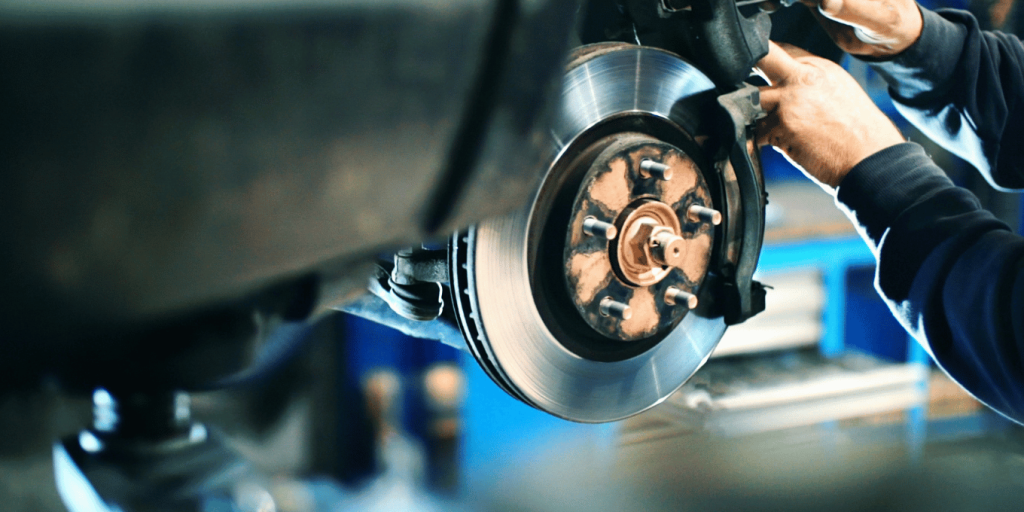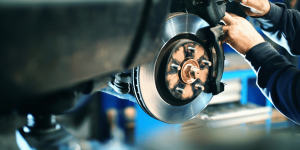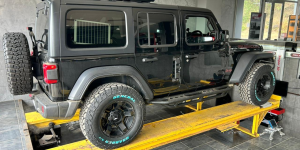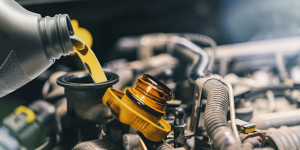Making sure that your car’s brakes are in good working order isn’t just crucial for your own safety, but also to protect other motorists and pedestrians on the road. Whether you need to come to a sharp stop at a traffic light or maintain an appropriate distance from the driver ahead of you on the highway, top-performing brakes are the key. But how often should you get your brakes checked to ensure they’re up to standard? Here are some guidelines.
Get Your Brakes Checked Every Six months
As a rough guide, try to get your brakes inspected every six months. A helpful way to remember to get this simple task done is to ask for a brake check each time you come in to have your tires rotated.
Some drivers may need to have their brakes checked more often. For example, if you frequently drive in heavy traffic and have to use your brakes a lot, brake pads may wear down or other problems may develop more rapidly. Drivers who slam on the brakes hard will also cause their brake pads to wear out sooner.
How Long Do Brake Pads Last?
This question is difficult to answer accurately because the lifespan of your brake pads depends on your driving habits, the environment, your vehicle, and other factors. However, brake pads typically need to be replaced after 50,000 miles or about four years of average driving. For a more specific estimate, consult the owner’s manual for your vehicle.
There’s also a difference between brake pads made from different materials. Most brakes are made out of steel or metal, but ceramic carbon is often used in high-performance and luxury vehicles. These brake pads are longer lasting than their metal counterparts.
There are several driving techniques you can employ to extend the lifespan of your brake pads. First, avoid driving too close to the cars in front of you. This will give you more opportunity to coast to a stop when necessary rather than slamming on the brakes. Second, try to slow down gradually whenever possible rather than coming to a sudden stop. You can do this by paying attention to the road ahead and driving at a safe speed so that you have plenty of time to react to unexpected developments.
How To Tell When Your Brakes Need To Be Checked
There are several warning signs you should look out for that indicate your braking system needs maintenance. One early warning sign is if you have to push harder on the brake pedal to come to a stop than you used to. You may also notice that your car pulls slightly to one side whenever you brake. This can be a sign that the pads on one side are wearing down.
If you’re driving downhill or brake at high speed and notice a vibration, this is another prompt to get your brakes examined. The vibrations may be connected to warped or damaged brake discs, which can occur if pads are not replaced in time or if the braking system is old.
You should immediately bring your car in for servicing if you hear loud grinding or growling noises when you brake. This indicates that the metal components of your braking system are grinding against each other. Without prompt maintenance, this can cause serious damage to your vehicle that is likely to require expensive repairs to put right.
Other Problems
Wear and tear to brake discs and pads isn’t the only problem you should watch out for. You should also pay attention to changes in how your brake pedal feels. For example, if the pedal sinks gradually towards the floor or doesn’t feel firm when you press on it, this can indicate an issue with the internal workings of your brake system. It could be that water or air has gotten into the brake fluid, causing the system’s responsiveness to deteriorate.
Alternatively, your brake system may be leaking fluid. Check under your car when it’s parked, and you may find evidence of leaking fluid if this is the case.
Visually Inspecting Your Brakes
If you want to be proactive and keep an eye on your brake pad thickness, this is relatively easy to do. With some vehicles, you’ll be able to look through the wheel spokes and see the brake pads. In others, you may need to jack up the car, remove the wheel, and inspect the pads.
The pads will be attached to the calipers on either side of the brake rotors. While you’re examining the pads, you can also check to see if the surface of the rotors is smooth. If the pad appears to be thinner than a quarter of an inch, it’s time to take your car in for servicing. If the rotors appear uneven, it may be possible to smooth them out. Alternatively, replacing the rotors may be the best option to ensure your brakes continue working effectively.
You can also regularly check your brake fluid to make sure it’s in good condition. If you notice its level is low, this could be a sign of a leak. A dark color can indicate that the fluid is contaminated. If this is the case, all that may be required is for your fluid to be flushed and replaced. We can perform this task in no time at all.
Now that you know the basics about how to keep your brakes in good working order, why not let our team of auto experts at Oxmoor Toyota provide you with reliable and top-quality servicing for your vehicle? Our service center is run by certified auto technicians who use state-of-the-art equipment and certified parts to perform maintenance and repairs.
While you’re in getting your brakes checked, we can also keep your car running smoothly by offering oil changes, tire rotations, wiper blade changes, and battery testing. In our parts department, you can buy certified Toyota parts to carry out repairs on your vehicle. If you want to take advantage of these great services and more, contact us today to schedule an appointment.




